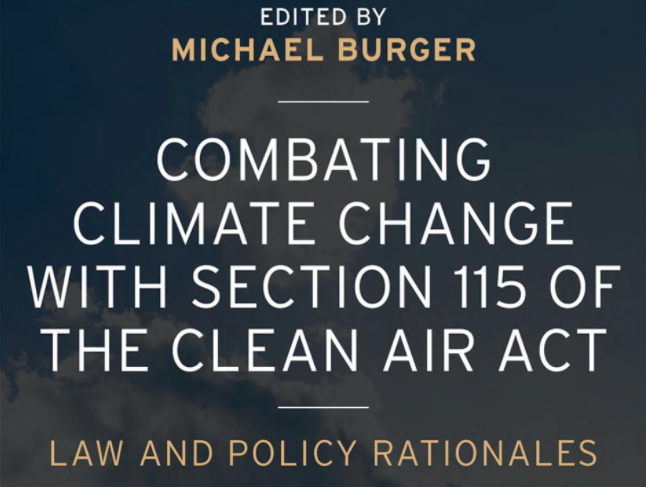Gregory E. Wannier
Deputy Director
In the secondary round of activity regulating greenhouse gas (GHG) emissions from stationary sources, EPA has sought to establish permitting programs under the Prevention of Significant Deterioration (PSD) section of the Clean Air Act, in conjunction with individual states through their State Implementation Plans (SIPs). Recent EPA permit approvals and denials may now give some insight as to how EPA plans to navigate and guide this permitting system.
General Guidelines
To help underlie and guide state permitting programs, EPA issued in March 2011 a “PSD and Title V Permitting Guidance for Greenhouse Gases.” In addition to describing the permitting process and describing guidelines (set by its Tailoring Rule) for determining whether GHG requirements apply, EPA describes how Best Available Control Technology (BACT) standards, which are required of regulated sources under the PSD program, should be implemented. This guidance follows a well established five-step, top-down process, adding particular considerations in the context of GHG emissions:
- Identify all available control technologies across a broad spectrum of possibilities and drawing even from experimental or cutting-edge options, focusing particularly on energy efficiency in component as well as overall performance, and notably including Carbon Capture and Storage (CCS) technologies.
- Eliminate technically infeasible options, based only on physical or technical barriers (anything that has been demonstrated in practice is feasible), with a note that EPA considers CCS to be generally feasible, but may become infeasible due to lack of space, transportation infrastructure (for building), or appropriate geological storage capacity.
- Rank remaining control technologies based on “effectiveness” (ability to reduce emissions).
- Evaluate most effective controls and document results considering energy, environmental, and economic (including monetary) implications of different choices, considering both positive and negative effects and then eliminating any “inappropriate” options. Such analysis may include secondary effects, such as the environmental impacts of reduced energy use; but no monetary guidelines are provided.
- Select the BACT, which is the most effective option that survived the Step 4 analysis (essentially the strongest option not having inappropriate economic, energy-use, or environmental costs).
It should be noted that EPA does not require states to implement BACT standards in exactly this way: it “does not seek to substitute its judgment for state permitting authorities in BACT determinations, but…does seek to ensure that individual BACT determinations by states with approved programs are reasoned and faithful to the requirements of the CAA.”
Application in Louisiana
One of the first GHG BACT analyses to face a state permitting process, and the first to get substantive feedback from the EPA, was done by Nucor Steel, for a proposed new facility in Louisiana. Nucor submitted its 5-page BACT analysis in October 2010, before EPA’s first version of the PSD and Title V Permitting Guidance for Greenhouse Gases was released in November 2010. In response, the Louisiana Department of Environmental Quality’s (LDEQ) issued a preliminary approval. On January 7, 2011, EPA Region 6 wrote a letter commenting on the LDEQ’s approval of this determination, addressing 11 areas of the permit where it thought revision or further consideration was appropriate. These comments focused on four areas of deficiency:
- In several areas of the permit, BACT limits required qualitative practices, rather than quantitative emission limitations. This can be justified in certain situations, but no justification was given for these decisions.
- No baseline was given from which reductions could be measured; nor were any comparisons made to best practices at other facilities in the same industry.
- The BACT guideline did not address the possibility of CCS technologies
- Certain efficiency levels were deemed to be potentially too low
Despite these reservations about the existing permit, however, LDEQ granted Nucor’s facility request on January 27, 2011. In doing so, LDEQ essentially ignored EPA’s comments. EPA has yet to respond to LDEQ’s final permit approval, either to approve or deny LDEQ’s decision.
Application in South Dakota
A contrasting example comes from South Dakota, where the South Dakota Department of Environment and Natural Resources (SDDENR) has been considering a BACT determination submitted by Hyperion Energy Center in South Dakota for a proposed oil refinery and power plant.
In its BACT GHG analysis, submitted March 2009 and so also before EPA’s guidance on GHGs, Hyperion explicitly followed the five-step process but called for no limitations and proposed that it would stick to the baseline in its combustion facilities and CO2 vents, “[b]ecause no control option more effective than the baseline has been identified.” After feedback from SDDENR, Hyperion submitted a second BACT suggestion in October 2010. This second submission gives a baseline, assesses industry practices, discusses CCS technologies, and considers efficiency measures, thus avoiding many of the procedural flaws identified in Louisiana. However, in three of four areas Hyperion’s proposed limitations are based on emissions it expects from the planned inherent design features of the plant – in other words, it suggests no changes. In the last area, dealing with equipment leaks, Hyperion suggests a number of changes that would go above and beyond baseline emission standards.
The SDDENR has not yet issued a final approval, and its semi-judicial Board of Minerals and Environment recently announced that it would hold a hearing on that permit on July 31, 2011. EPA has yet to take any action on this case, nor has it published any comments yet on SDDENR’s proposed permits.
Going Forward
In addressing these two BACT analyses, EPA faces two questions: first, how much process will it require of companies in their BACT analyses; and second, how much deference will it grant to state decisions under EPA-approved SIPs in the context of greenhouse gases?
Louisiana and South Dakota provide goalposts of a sort for EPA’s determinations. In Louisiana, Nucor submitted a short BACT that failed to address some basic procedural requirements, such as determining baseline emissions for certain aspects of its facility, or even setting quantitative emission standards. In South Dakota, Hyperion followed the EPA-approved five-step process almost to the tee, although its conclusions largely suggested that the facility emit what it had already planned to emit (in its inherent design). Approving both permit decisions would undoubtedly send a message that states have broad leeway to impose BACT requirements as strictly as they wish and that EPA had decided to step out of the individual regulatory process. Denying both would involve EPA in every aspect of the permitting process, going beyond form and into the substance of BACT decisions. In this little-followed area of regulation, there is much to be learned about EPA’s plans for greenhouse gas regulations.



